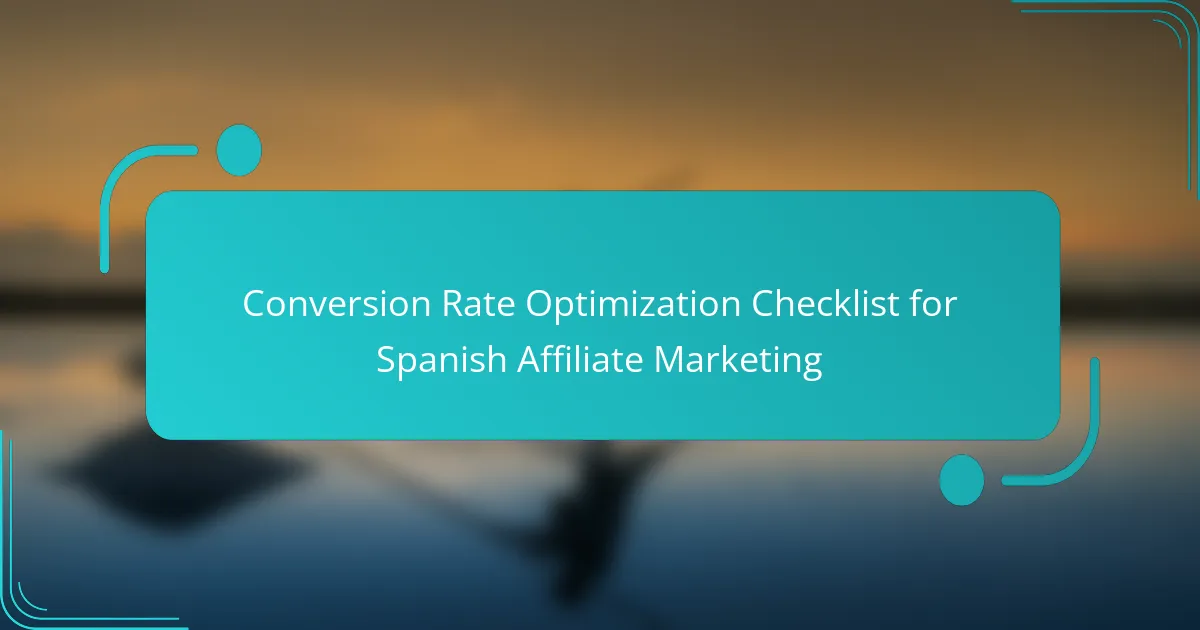Effective conversion rate optimization in Spanish affiliate marketing requires a deep understanding of the local audience and their unique preferences. By focusing on tailored content, strategic testing methods, and local SEO, marketers can significantly enhance user engagement and drive conversions. A comprehensive checklist can help ensure that website design, functionality, and performance are all optimized to create a seamless user experience.
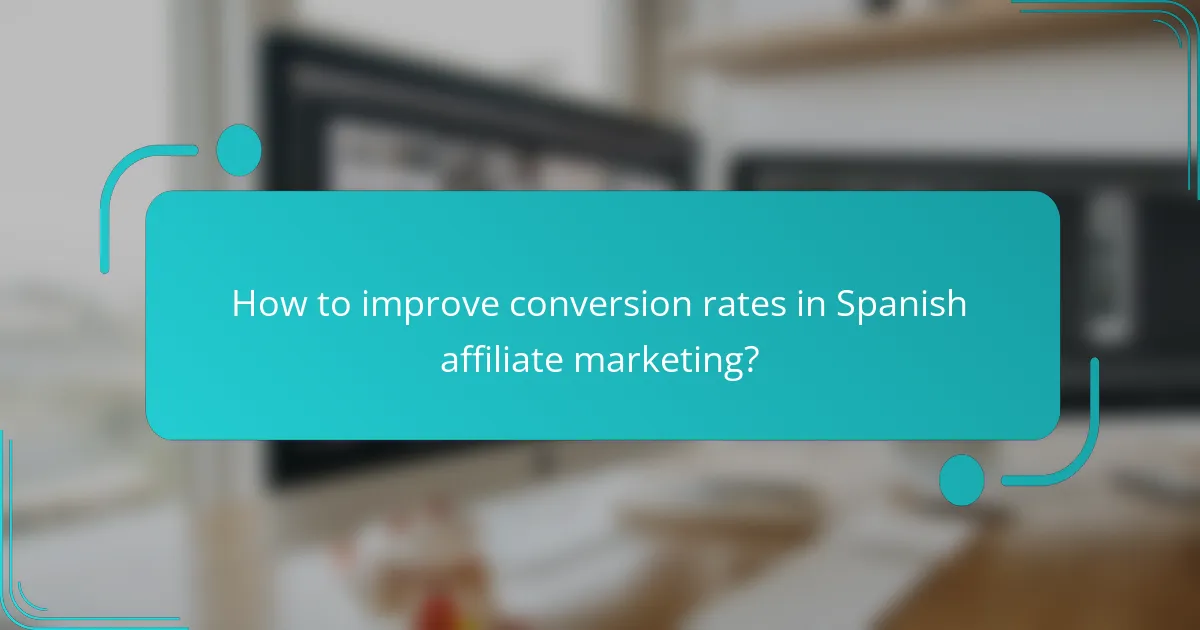
How to improve conversion rates in Spanish affiliate marketing?
Improving conversion rates in Spanish affiliate marketing involves understanding the local audience and tailoring strategies to meet their preferences. Focus on optimizing content, utilizing effective testing methods, and employing local SEO techniques to enhance visibility and engagement.
Optimize landing pages for Spanish audiences
Creating landing pages specifically for Spanish audiences is crucial for boosting conversions. Ensure that the language, visuals, and cultural references resonate with local users. Use clear calls-to-action (CTAs) and maintain a clean, user-friendly design to facilitate easy navigation.
Incorporate testimonials and social proof from Spanish-speaking customers to build trust. Highlight benefits that matter to this demographic, such as local shipping options or customer service in Spanish. Regularly update content to reflect current trends and preferences in the market.
Utilize A/B testing for effective strategies
A/B testing allows you to compare different versions of landing pages to determine which elements drive higher conversion rates. Test variations in headlines, images, and CTAs to see what resonates best with your Spanish audience. Aim for statistically significant results to make informed decisions.
Consider running tests over a few weeks to gather enough data. Analyze user behavior through metrics like click-through rates and bounce rates. Avoid making changes too frequently, as this can disrupt the testing process and lead to inconclusive results.
Leverage local SEO techniques
Local SEO is essential for attracting Spanish-speaking users searching for affiliate products. Optimize your website with relevant keywords in Spanish, including local terms and phrases that potential customers might use. Ensure that your content is culturally appropriate and reflects local dialects.
Claim your business on local directories and optimize your Google My Business listing. Encourage satisfied customers to leave reviews in Spanish, as this enhances credibility and improves search rankings. Regularly update your content with local events or promotions to keep it fresh and engaging.
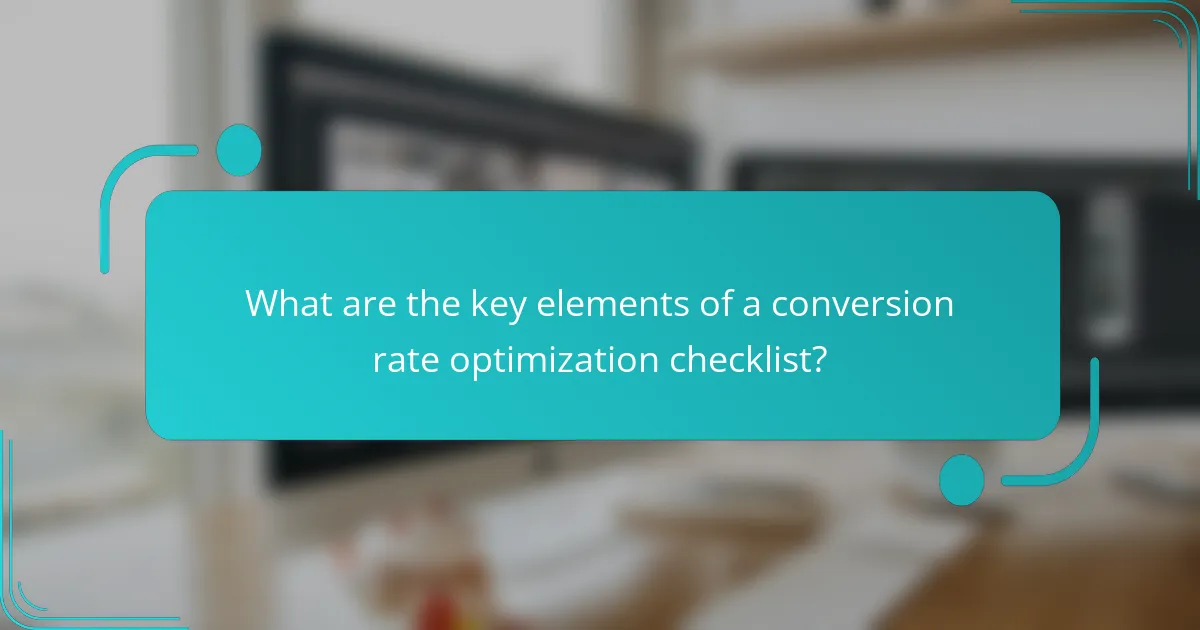
What are the key elements of a conversion rate optimization checklist?
A conversion rate optimization checklist includes essential components that enhance user experience and drive conversions. Key elements focus on optimizing website design, functionality, and performance to effectively engage visitors and encourage desired actions.
Clear call-to-action buttons
Clear call-to-action (CTA) buttons are crucial for guiding users toward taking specific actions, such as signing up or making a purchase. Ensure that CTAs are visually distinct, using contrasting colors and concise, action-oriented text.
Position CTAs strategically within your content, ideally above the fold and at the end of articles. Test different wording and placements to determine which combinations yield the highest conversion rates.
Mobile responsiveness
Mobile responsiveness ensures that your website functions well on various devices, including smartphones and tablets. With a significant portion of users accessing sites via mobile, a responsive design can dramatically improve user experience and conversion rates.
Utilize flexible layouts and scalable images to adapt to different screen sizes. Regularly test your site on multiple devices and browsers to identify and fix any usability issues that may hinder conversions.
Fast loading times
Fast loading times are essential for retaining visitors and reducing bounce rates. Aim for a loading time of under three seconds, as delays can lead to significant drops in user engagement and conversions.
Optimize images, leverage browser caching, and minimize HTTP requests to enhance loading speed. Use tools like Google PageSpeed Insights to analyze performance and identify areas for improvement.
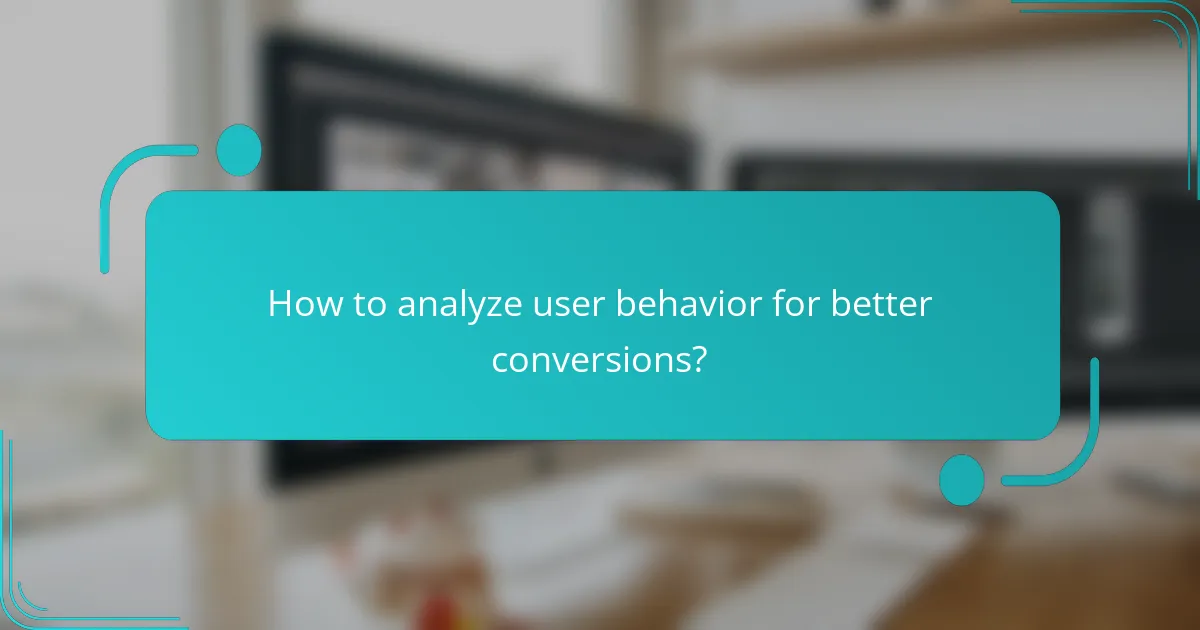
How to analyze user behavior for better conversions?
Analyzing user behavior is crucial for improving conversion rates in Spanish affiliate marketing. By understanding how users interact with your site, you can identify areas for enhancement and optimize the user experience to drive more conversions.
Use Google Analytics for insights
Google Analytics provides valuable insights into user behavior, including traffic sources, user demographics, and behavior flow. Set up goals to track conversions and analyze which pages lead to the highest drop-off rates.
Focus on metrics such as bounce rate and average session duration to gauge user engagement. For Spanish audiences, consider segmenting data by language to tailor your marketing strategies effectively.
Implement heatmaps to track engagement
Heatmaps visually represent user interactions on your website, showing where visitors click, scroll, and spend time. This information helps identify which elements capture attention and which areas may need improvement.
Tools like Hotjar or Crazy Egg can be used to generate heatmaps. Regularly review these insights to adjust your layout and content, ensuring they align with user preferences and behaviors specific to the Spanish market.

What tools can enhance conversion rate optimization?
Several tools can significantly improve conversion rate optimization (CRO) for Spanish affiliate marketing by providing insights and facilitating testing. Utilizing the right software can help identify user behavior patterns and optimize landing pages effectively.
Optimizely for A/B testing
Optimizely is a powerful A/B testing tool that allows marketers to compare different versions of web pages to determine which performs better. By creating variations of your landing pages, you can test elements such as headlines, images, and calls to action to see what resonates most with your audience.
When using Optimizely, focus on testing one variable at a time to isolate its impact on conversion rates. For instance, if you change the color of a button, keep other elements constant to accurately measure the effect. Aim for a sample size that provides statistically significant results, typically in the low hundreds or thousands, depending on your traffic levels.
Hotjar for user feedback
Hotjar is an excellent tool for gathering user feedback through heatmaps, session recordings, and surveys. It enables marketers to visually understand how users interact with their sites, identifying areas where they may struggle or lose interest.
To leverage Hotjar effectively, implement heatmaps to see where users click most frequently and where they drop off. Use session recordings to observe real user behavior and identify pain points. Additionally, consider deploying short surveys to gather direct feedback, asking questions about user experience and suggestions for improvement. This qualitative data can complement quantitative metrics, leading to more informed optimization strategies.

How to tailor content for Spanish-speaking audiences?
To effectively tailor content for Spanish-speaking audiences, focus on cultural relevance and language nuances. Understanding the specific needs and preferences of this demographic can significantly enhance engagement and conversion rates.
Use culturally relevant examples
Incorporating culturally relevant examples is crucial for resonating with Spanish-speaking audiences. Use references to local traditions, holidays, or popular figures that your audience can relate to. For instance, mentioning Día de los Muertos in Mexico or La Feria de Abril in Spain can create a connection.
Additionally, consider regional variations in cultural references. What works in one Spanish-speaking country may not be as effective in another. Tailor your examples to the specific audience’s cultural context to maximize impact.
Incorporate local dialects and phrases
Using local dialects and phrases can enhance relatability and authenticity in your content. Different Spanish-speaking countries have unique expressions and slang, which can make your message feel more personalized. For example, using “vos” in Argentina instead of “tú” can resonate better with that audience.
Be mindful of the nuances in language and avoid overly formal language that may alienate readers. Instead, adopt a conversational tone that reflects the local dialect, making your content more engaging and approachable.
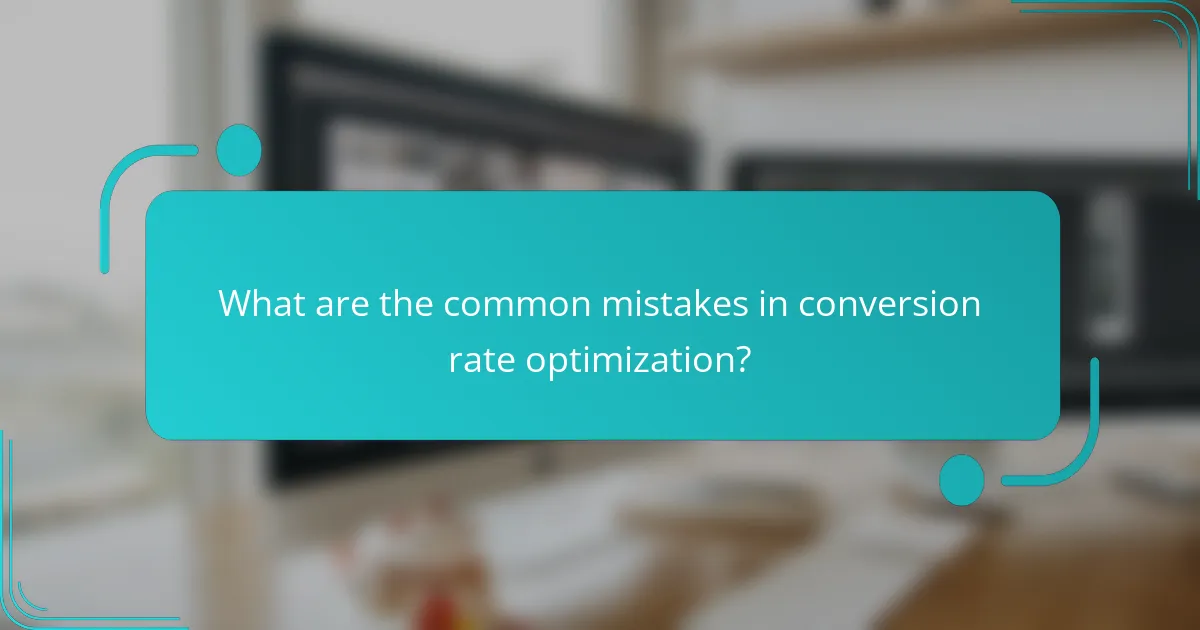
What are the common mistakes in conversion rate optimization?
Common mistakes in conversion rate optimization (CRO) can significantly hinder the effectiveness of affiliate marketing strategies. These errors often stem from a lack of understanding of user behavior, neglecting key demographics, and failing to test and iterate on marketing tactics.
Neglecting mobile users
Neglecting mobile users is a critical mistake in conversion rate optimization, especially as mobile traffic continues to grow. Websites that are not optimized for mobile devices can lead to high bounce rates and lost sales opportunities.
To effectively cater to mobile users, ensure that your site is responsive, loads quickly, and provides a seamless user experience. Consider using larger buttons, simplified navigation, and concise content to enhance usability on smaller screens.
Regularly test your mobile site’s performance using tools like Google’s Mobile-Friendly Test. Aim for load times under three seconds, as this can significantly impact user engagement and conversion rates. Avoid common pitfalls such as pop-ups that are difficult to close on mobile devices, which can frustrate users and drive them away.
